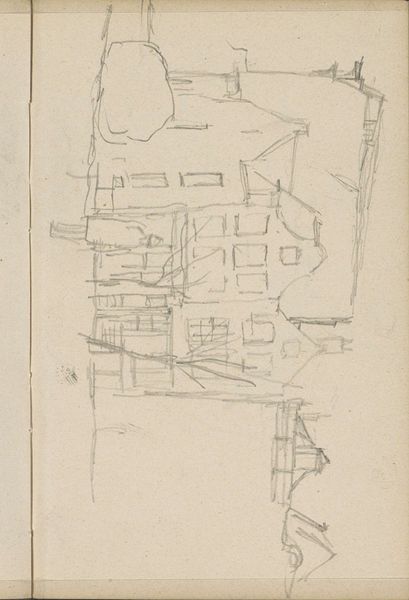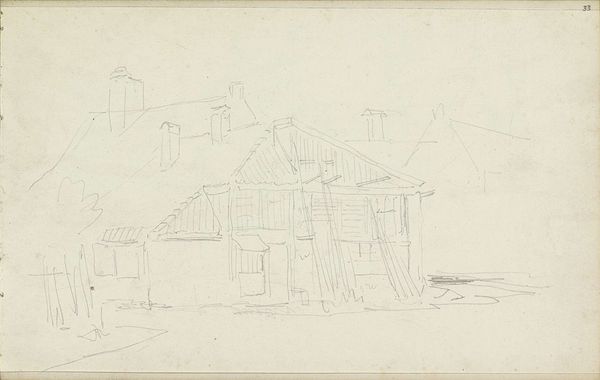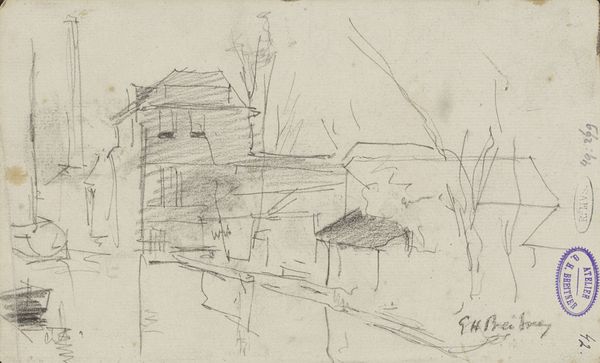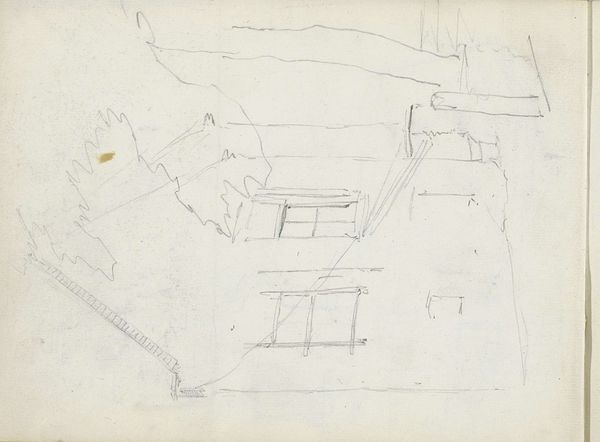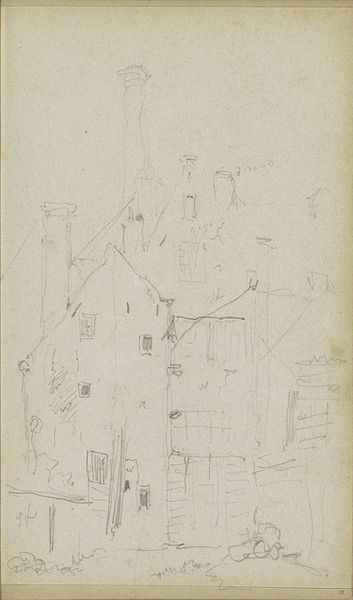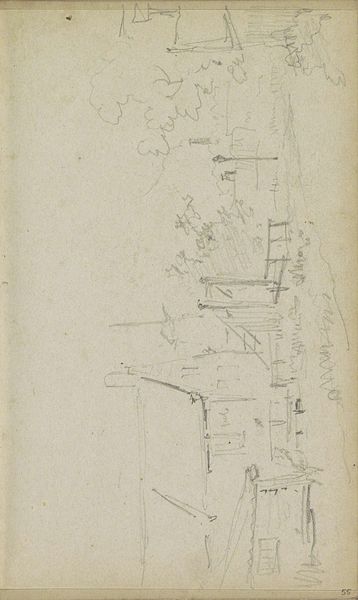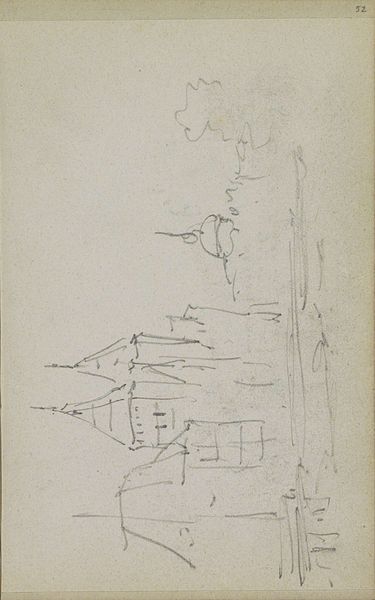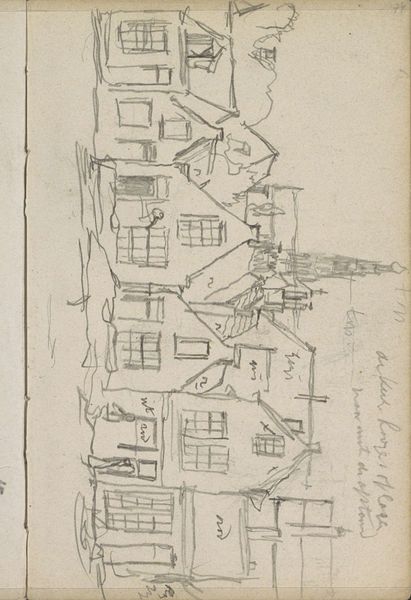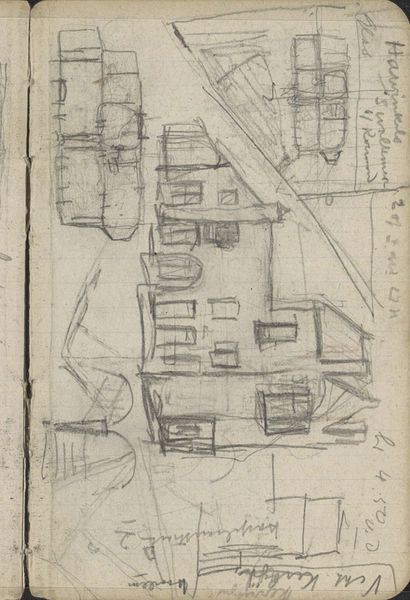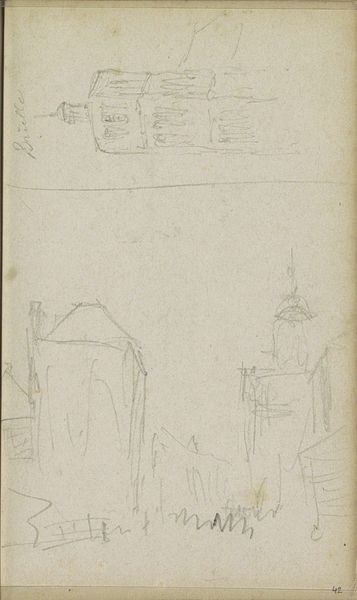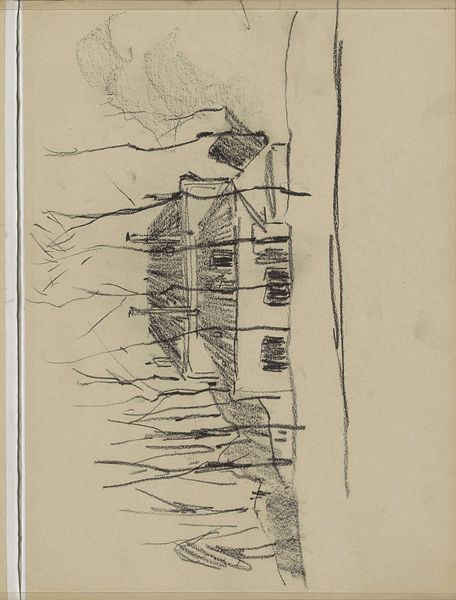
drawing, pencil
#
drawing
#
amateur sketch
#
light pencil work
#
sketched
#
incomplete sketchy
#
landscape
#
personal sketchbook
#
idea generation sketch
#
sketchwork
#
pencil
#
sketchbook drawing
#
cityscape
#
sketchbook art
#
realism
#
initial sketch
Copyright: Rijks Museum: Open Domain
Editor: This is "Gezicht op een rij gebouwen," or "View of a Row of Buildings," a pencil drawing by Adrianus Eversen, made sometime between 1828 and 1897. It's quite a quick sketch, very minimal. What strikes you most when you look at this, thinking about its place in history? Curator: Well, it’s interesting to consider the context in which this drawing might have been produced and consumed. Sketches like these, especially of urban scenes, gained popularity with the rise of the bourgeoisie and their fascination with documenting their environment. Think about the democratisation of art that was enabled by easily reproducible artworks, or that could act as templates for larger pieces. Eversen wasn’t just recording what he saw; he was potentially participating in a broader cultural movement. Does the sketched, unfinished nature suggest anything to you about its possible function? Editor: Maybe it was a preparatory sketch, or something just for his own personal use? Curator: Precisely! And consider how these personal sketches contribute to the broader visual culture of the period. They offer intimate glimpses into the everyday life and aesthetics that shaped the dominant artistic trends. Eversen’s choice to depict this particular street—its architecture, its arrangement—suggests a deliberate engagement with the urban landscape. Do you think this could serve as a form of social commentary? Editor: Hmm, I see what you mean. It's not just a pretty picture; it's a glimpse into the urban development and maybe even the social strata of the time. But what's the message, exactly? Curator: That's the question to keep asking, isn’t it? How do we interpret artistic creation to reveal insights into socio-political dimensions and cultural developments? We see here an act of translating urban experience into art. Understanding Eversen’s influences, the market for such sketches, and the values assigned to these scenes provides a fascinating lens through which to explore broader societal narratives of the time. Editor: That's a whole new way of looking at a simple sketch. I guess art is never really just about the image itself. Curator: Indeed. It's about the stories behind it, the social context that shapes it, and the ways it speaks to its audience. Every work offers a fresh opportunity to reconsider the forces at play and understand its true impact.
Comments
No comments
Be the first to comment and join the conversation on the ultimate creative platform.
